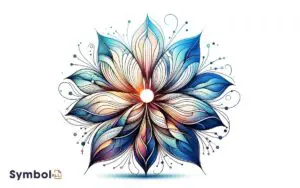What Flower Symbolizes Innocence and Purity? White Lily!
The white lily stands as the quintessential emblem of innocence and purity. Its scientific attributes from unblemished petals to its graceful posture contribute greatly to its symbolism.
Historically embedded deep within various cultures, the white lily’s pristine color and enduring nature reflect untouched purity and the resilience of innocence.
This flower’s intricate symbolic meanings derive from detailed cultural examinations and historical texts, positioning it universally as a representation of pristine purity and moral integrity.
Beyond its beauty, the white lily resonates with shared human values across global traditions. Exploring its diverse symbolic dimensions offers profound insights into its universal appeal.

Key Takeaways
The Symbolism of Flowers
Throughout history, various cultures have attributed meaning to flowers, often using them as symbols to convey complex emotions and messages.
This practice, known as floriography, emerged prominently in the Victorian era, where societal norms restricted open communication of feelings. Flowers then became a coded language, allowing individuals to express sentiments that couldn’t be spoken aloud.
Each flower and its color carried specific meanings. For instance, red roses symbolize love and passion, while yellow roses communicate friendship and joy.
Scientists and historians analyze how these meanings have evolved, noting that cultural and regional disparities impact interpretation to a great extent.
Understanding the symbolism of flowers requires examining historical texts, botanical studies, and cultural artifacts, offering insights into human emotions, social customs, and communication methods across various societies.
White Lily: A Pure Emblem
You’ll find that the white lily stands as a universal symbol of purity and innocence, its significance deeply rooted in various cultures around the globe.
This emblematic flower holds intricate symbolic meanings, each petal seemingly whispering different tales of virtue and chastity.
Analyzing its cultural significance worldwide reveals a rich tapestry of beliefs and traditions, painting a clear picture of its revered status across different societies.
Symbolic Meanings Explained
In the domain of floral symbolism, the white lily stands as a quintessential emblem of purity and innocence. This association isn’t arbitrary; it’s deeply rooted in the flower’s visual characteristics and biological properties.
The white lily’s pristine color reflects an untouched and serene purity, often likened to the untouched snow or a blank canvas, which symbolizes a clean, untarnished state. Additionally, its long-lasting nature symbolizes the endurance of innocence over time.
Scientifically, the white lily exhibits unique attributes it produces large, unblemished petals that remain remarkably pure even as they mature, unlike many other flowers that may discolor.
This enduring whiteness and the flower’s graceful posture contribute to its symbolic representation of innocence, making it a powerful emblem in various contexts related to purity.
Cultural Significance Worldwide
Exploring the white lily’s symbolism, we find its representation of purity and innocence isn’t confined to its biological traits but extends into various global cultures, each attributing unique significance to this flower.
In Christian iconography, the white lily is closely associated with the Virgin Mary, symbolizing her purity and divinity. This association underlines the flower’s role in religious ceremonies, particularly in contexts emphasizing purity and chastity.
Meanwhile, in Eastern cultures, the white lily often embodies a dual symbolism of purity and renewal. For instance, in Chinese traditions, it’s a common gift for weddings, symbolizing a pure union and the hope for a blessed and prosperous future.
Analytically, this cross-cultural reverence underscores the white lily’s universal appeal as a symbol of untainted beauty and moral integrity.
Historical Significance
Throughout history, the symbolic meanings of flowers, particularly those associated with innocence and purity, have been deeply embedded in various cultures and rituals.
You’ll find that in the annals of history, certain flowers have consistently represented these virtues due to their unblemished beauty and perceived untainted nature.
Analyzing historical texts and artifacts reveals that flowers such as lilies and white roses were integral to ceremonies and rites, symbolizing new beginnings, purity of heart, and innocence.
These symbolic associations weren’t arbitrary but based on detailed observations of the flowers’ characteristics ranging from color to form which were meticulously documented and interpreted.
This historical significance underscores how human societies have long sought to express complex ideas and emotions through the natural world, utilizing flowers as a universal language before written communication evolved to its current complexity.
Cultural Interpretations
You’ll find that the cultural interpretations of flowers symbolizing innocence and purity are deeply rooted in historical symbolism yet continuously evolve through modern associations.
This dynamic interplay between tradition and contemporary perspectives offers a rich field for analysis, highlighting how societal values and beliefs shape and are shaped by floral representations.
Historical Symbolism
Delving into the domain of historical symbolism, flowers have long served as emblems of innocence and purity across various cultures.
In ancient times, civilizations like the Greeks and Romans attributed specific meanings to flowers, often integrating them into their myths and legends to represent virtues or moral lessons.
The lily, for instance, has been universally recognized for its associations with purity, largely due to its white, unblemished petals.
Similarly, in medieval Christian iconography, the white lily symbolized the Virgin Mary’s purity and divine motherhood, reinforcing the flower’s image as an emblem of innocence.
This cultural codification of flowers extends beyond Western traditions, with Eastern cultures also assigning similar values to specific blooms, demonstrating a universal human inclination to imbue nature with symbolic significance.
Modern Associations
While historical symbolism has deeply rooted flowers like the lily in the imagery of innocence and purity, contemporary cultural interpretations continue to expand and evolve these associations.
Modern associations often reflect societal values and trends, emphasizing the dynamic nature of symbolic meanings.
As you explore this topic, it’s important to take into account the following aspects:
- The influence of media and art in redefining flower symbolism.
- The role of global cultural exchange in introducing new symbolic meanings.
- The impact of social media trends on popularizing certain flowers.
- Scientific discoveries that contribute to our understanding of flowers.
- Environmental concerns that shape perceptions of natural purity and innocence.
These factors collectively enrich our appreciation of flowers, underscoring their enduring significance in expressing complex human emotions and ideals.
The Lily in Literature
Throughout literary history, the lily has frequently symbolized innocence and purity, serving as a potent motif in numerous works.
Authors have meticulously employed the lily to represent characters’ untainted natures or to symbolize moments of profound revelation and transformation.
This thematic usage isn’t coincidental; it’s steeped in an understanding of the flower’s botanical characteristics and historical connotations.
The lily’s perennial life cycle, emerging pristine and radiant from the murk of its aquatic or soil-bound existence, mirrors the literary journey of characters from ignorance or corruption towards enlightenment or redemption.
Researchers have analyzed the lily’s recurrent appearance, noting its utility in foreshadowing and its role as a narrative device that enriches character development and thematic complexity.
Its presence in literature isn’t merely decorative but deeply emblematic, reflecting a nuanced appreciation of its symbolism.
Gardening Tips for Lilies
To guarantee your lilies flourish, you must first comprehend their specific soil and sunlight requirements, as these factors greatly influence their growth and blooming potential.
- Soil pH: Lilies thrive in slightly acidic to neutral soil (pH 6.0-7.0). Utilize a pH meter to ascertain your garden’s soil condition.
- Drainage: Essential drainage is vital. Amend clay soil with organic matter to enhance drainage and prevent root rot.
- Sunlight: Make sure they receive six to eight hours of direct sunlight daily. Partial shade is tolerable but may reduce bloom vitality.
- Fertilization: Apply a balanced 10-10-10 fertilizer monthly during the growing season to support robust growth and vibrant blooms.
- Watering: Maintain consistent moisture, especially during dry spells, but avoid overwatering to prevent bulb decay.
Occasions for White Lilies
Given their symbolic representation of purity and innocence, white lilies are often chosen for various ceremonies and events, including weddings, funerals, and baptismal celebrations.
Within the context of weddings, these flowers signify the unblemished beauty and unity of the bond being formed.
Analytically, their presence at funerals can be attributed to their role in conveying a sense of peaceful return and the purity of the soul progressing. Similarly, during baptismal celebrations, white lilies symbolize new beginnings and the innocence inherent in the ritual of baptism.
This selection isn’t arbitrary but deeply rooted in cultural and religious symbolism, reflecting an intricate understanding of the flower’s morphological features and historical connotations.
Their use across these occasions demonstrates a universal appeal to purity and innocence conveyed through the language of flowers.
Varieties of Innocence
Exploring the concept of innocence, it’s crucial to recognize the diverse species within the floral kingdom, each embodying purity in unique morphological and symbolic dimensions.
The following list showcases the variety:
- White Roses: Representing purity, their unblemished petals symbolize innocence.
- Daisies: With a simple structure, daisies convey an unassuming beauty and innocence.
- Lily of the Valley: Small and delicate, these flowers symbolize the return of happiness and purity.
- White Tulips: Often associated with forgiveness and respect, they also represent purity.
- Gardenias: Their creamy white petals and sweet fragrance are symbols of purity and secret love.
Each species reveals a different facet of innocence, illustrating the depth and breadth of this theme within the botanical world.
Preserving Their Beauty
Maintaining the pristine condition of flowers symbolizing innocence and purity requires a meticulous approach to their care and preservation. You must understand the specific needs of each variety, as ideal conditions can greatly differ.
For instance, ensuring the right balance of light and moisture is essential; too little light may hinder growth, while excess moisture can lead to fungal diseases that compromise their integrity.
Additionally, employing a pH-balanced soil, tailored to each flower’s requirement, enhances nutrient uptake, promoting vibrant, healthy blooms.
Regular monitoring and adjustments to their environment prevent premature wilting, preserving their symbolic beauty longer. By adopting these practices, you’re not just nurturing plants; you’re safeguarding the delicate essence they represent.
Conclusion
To sum up, as you’ve delved into the rich tapestry of meanings behind the white lily, it’s intriguing to note how deeply ingrained this symbol of innocence and purity is in various cultures and literatures.
Coincidentally, the same principles apply to cultivating these delicate blooms—requiring a precise, analytical approach to maintain their beauty.
Understanding the intricate details of their care and symbolism not only enhances their aesthetic appeal but also enriches the significance they bring to every occasion they grace.






